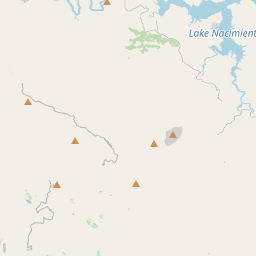Carnegie Library
Historical marker location:






1881: Andrew Carnegie, a Scottish-American industrialist and philanthropist, begins his philanthropic efforts in library construction by donating funds to build the Braddock Library in Pennsylvania.
1883: The first "Carnegie Library" is officially established in Dunfermline, Scotland, Carnegie's birthplace. This library serves as a model for future Carnegie Libraries.
1886: Carnegie writes an article titled "Wealth," where he articulates his belief in philanthropy and the responsibility of the wealthy to give back to society.
1889: The Carnegie Corporation of New York is established with the aim of funding the construction of libraries across the United States and other English-speaking countries.
1893: The first Carnegie Library in the United States, the Carnegie Library of Braddock in Pennsylvania, is opened to the public.
Late 1890s to early 1900s: The construction of Carnegie Libraries spreads rapidly throughout the United States and other parts of the English-speaking world, including Canada, the United Kingdom, Australia, and New Zealand. The libraries are often designed by prominent architects and feature diverse architectural styles.
1901: The Carnegie Corporation of New York is founded as a philanthropic organization to manage and administer Andrew Carnegie's charitable projects, including the library program.
1902: Carnegie makes a significant endowment, donating $10 million to establish the Carnegie Institute in Pittsburgh, Pennsylvania. The Institute includes a library, an art gallery, and a natural history museum.
1917: Andrew Carnegie dies, leaving a lasting legacy of philanthropy, including the establishment of thousands of libraries around the world.
1920s-1930s: The construction of Carnegie Libraries gradually slows down, and the focus shifts to maintaining and updating existing libraries to meet changing community needs.
Late 20th century to present: Many Carnegie Libraries undergo renovations, expansions, or repurposing to adapt to modern library services and technological advancements. Some continue to operate as public libraries, while others have been transformed into cultural centers, museums, community spaces, or educational institutions.
The Carnegie Libraries have left an indelible mark on the accessibility of knowledge and education. They remain a testament to Andrew Carnegie's belief in the power of libraries to uplift communities and provide opportunities for personal and intellectual growth.
The first McDonald's restaurant was opened in San Bernardino, California in 1940 by Richard and Maurice McDonald. The fast-food chain went on to become one of the most successful in the world.
In 1769, Spanish explorer Gaspar de Portola led an expedition through the region, establishing the first European presence in what is now San Luis Obispo County. The Spanish established missions along the California coast, including Mission San Luis Obispo de Tolosa, which was founded in 1772. The mission played a significant role in the region's history, attracting settlers and serving as an agricultural hub.
During the 19th century, San Luis Obispo County experienced rapid growth with the discovery of gold in the nearby Sierra Nevada Mountains. The county became an important stop on the journey to the gold fields, and the population boomed. Agriculture, particularly the dairy industry, also played a crucial role in the county's development during this time.
In the 20th century, San Luis Obispo County continued to grow and evolve. The completion of Highway 101 in the 1930s and the establishment of California Polytechnic State University in San Luis Obispo in 1901 further contributed to the area's growth. Today, the county is known for its diverse landscapes, including stunning coastline, rolling hills, and charming small towns, making it a popular destination for tourists and residents alike.
San Luis Obispo County Timeline
This timeline provides a concise overview of the key events in the history of San Luis Obispo County, California.
- 1769 - Spanish explorers arrive in the region
- 1772 - Mission San Luis Obispo de Tolosa is founded
- 1821 - Mexican War of Independence leads to Mexican control of the area
- 1842 - San Luis Obispo becomes a Mexican Pueblo
- 1848 - Treaty of Guadalupe Hidalgo ends the Mexican-American War, transferring the area to the United States
- 1850 - San Luis Obispo County is established
- 1864 - Pacific Coast Railway arrives in San Luis Obispo
- 1923 - Highway 1 is completed, connecting San Luis Obispo County to the rest of California's coast
- 1934 - Diablo Canyon Power Plant begins operation
- 1985 - Cal Poly's San Luis Obispo campus becomes the largest employer in the county